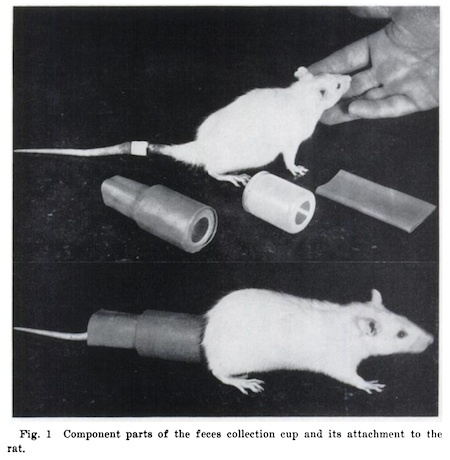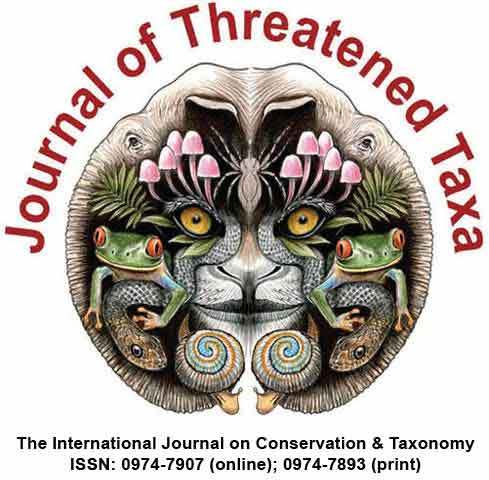Marc Abrahams's Blog, page 314
August 8, 2015
Ig Nobel-winning Indian murder trick can be adapted for the Internet
The non-biologically-murderous trick that led to an Ig Nobel Peace Prize for the living dead can be easily adapted for the Internet age, suggests an AFP report.
The 2003 Ig Nobel Peace Prize was awarded to Lal Bihari, of Uttar Pradesh, India, for a triple accomplishment: First, for leading an active life even though he has been declared legally dead; Second, for waging a lively posthumous campaign against bureaucratic inertia and greedy relatives; and Third, for creating the Association of Dead People.
The AFP reports, today, on a high-tech version of this form of murder:
Def Con: Hackers can virtually kill people, manipulate death records, Australian security expert says
A rush to make registering deaths digital has made it simple for maliciously-minded hackers to have someone who is alive declared dead by authorities, an Australian computer security expert says.
Getting birth certificates for virtual babies was demonstrated to be even easier than killing off people in the digital world, because registering births online only involves doctors and parents.
Hackers at the infamous annual Def Con gathering in Las Vegas on Friday got schooled in how to be online killers.
“This is a global problem,” Australian computer security specialist Chris Rock said, as he launched a presentation titled I Will Kill You….
You can learn more about the original, low-tech murder method — and about the prize-winning response of some of the murder victims — on Improbable Research podcast #11: The Knight of the Living Dead.
Click on the “Venetian blinds” icon — at the lower right corner here — and then select “EPISODE 11: The Knight of the Living Dead”:
(Thanks to Kurt Verkest for bringing this to our attention.)
BONUS: A Times of India report about how some of the living dead are standing for election to political office.

Human-assisted maggot painting
Investigator Sally Shelton alerts us to the artistic collaboration between Erin Grindley Watson and some maggots. The result: fine art paintings, or perhaps just fine-art paintings.

August 7, 2015
International Vulture Awareness Day (2015)
A reminder – “The first Saturday in September each year is International Vulture Awareness Day.” Details of IVAD 2015 can be found here.

August 6, 2015
Prevention of coprophagy in the rat
A look back at one of the classic studies about prevention of coprophagy in the rat:
“Prevention of coprophagy in the rat,” Richard H. Barnes, Grace Fiala, Bette McGehee, and Ann Brown, Journal of Nutrition, vol. 63, no. 4 (1957): 489-498. The authors, at Cornell University, begin with the now-familiar words:
“The contributions of coprophagy in rats as a means of making available the nutrients that are synthesized in the lower intestine has remained one of the major nutritional mysteries of our time…
Here’s detail from the study:


August 5, 2015
Podcast #23: The effect of country music on suicide
“Volunteers performed three 1-minute sequences of continuous chest compressions on a manikin accompanied by No Music, repeated choruses of ‘Achy Breaky Heart’ and ‘Disco Science’.” This and other country music insights — and lots of other things — turn up in this week’s Improbable Research podcast.
Click on the “Venetian blinds” icon — at the lower right corner here — to select whichever week’s episode you want to hear:
SUBSCRIBE on Play.it, iTunes, or Spotify to get a new episode every week, free.
This week, Marc Abrahams tells about:
The effect of country music on suicide. (“The Effect of Country Music on Suicide,” Steven Stack and James Gundlach, Social Forces, volume 71, number 1, September 1992, on pp. 211-8. / “Comments on Stack and Gundlach’s “The Effect of Country Music on Suicide:” An “Achy Breaky Heart” May Not Kill You,” Gary W. Mauk, Matthew J. Taylor, Karl R. White, and T. Scott Allen, Social Forces, vol. 72, no. 4, 1994, pp. 1249-1255. / “Achy Breaky Makey Wakey Heart? A Randomised Crossover Trial of Musical Prompts,” Malcolm Woollard, Jason Poposki, Brae McWhinnie, Lettie Rawlins, Graham Munro, and Peter O’Meara. Emergency Medicine Journal, 2011. Featuring a dramatic reading by Jean Berko Gleason.) Here’s video of a young man effectively singing country music about suicide: And here’s Billy Ray Cyrus singing the experimentally-interesting song “Achy Breaky Heart”:
Medical Research Review. (“Acute Conjunctival Inflammation Following Contact with Squashed Spider Contents,” Geoffrey K. Isbister, American Journal of Ophthalmology, vol. 136, no. 3, September 2003, pp. 563-4. / “Ear Candles — Efficacy and Safety,” Daniel R. Seely, Suzanne M. Quigley, and Alan W. Langman, Laryngoscope, vol. 106, no. 10, October 1996, pp. 1226-9. / “Nonarteritic Ischemic Optic Neuropathy Developing Soon After Use of Sildenafil (Viagra): A Report of Seven New Cases,” Howard D. Pomeranz and Abdhish R. Bhavsar, Journal of Neuro-Opthamology, vol. 25, no. 1, March 2005, pp. 9-13. Featuring dramatic readings by Daniel Rosenberg.)
Guéguen and the goad of small things. (“Women’s Bust Size and Men’s Courtship Solicitation,” Nicolas Guéguen, Body Image, vol 4, no. 4, December 2007, pp. 386–90. / “Bust Size and Hitchhiking: A Field Study,” Nicolas Guéguen, Perceptual and Motor Skills, vol. 105, no. 3, part 2, December 2007, pp. 1294–8. / “The Effect of Touch on Tipping: An Evaluation in a French Bar,” Nicolas Guéguen and Celine Jacob, International Journal of Hospitality Management, vol. 24, no. 2, 2005, pp. 295–9. / “The Effect of Perfume on Prosocial Behavior of Pedestrians,” Nicolas Guéguen, Psychological Reports, vol. 88, 2001, pp. 1046-8. Featuring dramatic readings by Robin Abrahams .)
The mysterious John Schedler perhaps did the sound engineering this week.
The Improbable Research podcast is all about research that makes people LAUGH, then THINK — real research, about anything and everything, from everywhere —research that may be good or bad, important or trivial, valuable or worthless. CBS distributes it, both on the new CBS Play.it web site, and on iTunes and Spotify).

Background music can cause confusion in the operating theatre (new study)
Background music can, suggests a new study, cause problems during medical surgery.
A new paper in the Journal of Advanced Nursing examines ‘Music and communication in the operating theatre’. It notes that: “According to the cited sources, music is played in 53-72% of surgical operations performed.” And concludes: “Music played in the operating theatre can interfere with team communication, yet is seldom recognized as a potential safety hazard.”
The paper’s abstract doesn’t specify which music tracks are the most popular. Or which might be appropriate, or inappropriate. Please comment below with your suggestions. Here’s ours…
Note: One of the co-authors of the paper, Dr. Roger Kneebone, professor of surgical education at Imperial College London, recently appeared onstage (in a Nominative Determinism capacity) at the Ig Nobel EuroTour show, London, 2015.

August 4, 2015
Efficacy of spent blewit on pythium damping-off
“What,” you may be asked, “is the efficacy of spent blewit mushroom compost and Bacillus aryabhattai combination on control of Pythium damping-off in cucumber?” If pressed for time, you can simply direct the curious person to this study:
“Efficacy of spent blewit mushroom compost and Bacillus aryabhattai combination on control of Pythium damping-off in cucumber,” J. T. Chen, M.J. Lin, and J.W. Huang, The Journal of Agricultural Science, vol. 153, no. 07, September 2015, pp. 1257-1266.
(Thanks to Tom Gill for bringing this to our attention.)
Bonus: blewit

August 3, 2015
Ascetic purity of food, ascetic unidirectionality of electricity
Rob Rhinehart, the creator of Soylent, the fungible foodstuff, has now turned his simplifying attention to electricity. He explains, on his “Mostly Harmless blog:
How I Gave Up Alternating Current

Soylent, in a bottle, in a hand, in a photo.
The walls are buzzing. I know this because I have a magnet implanted in my hand and whenever I reach near an outlet I can feel them. I can feel fortresses of industry miles away burning prehistoric hydrocarbons by the megaton….
Now I don’t need any of them. I am electrically self reliant. My home life runs comfortably on a single 100W solar panel, which cost $150 and was available on Amazon Prime…. I have been living on this system for a few months now and am thrilled how well it works…. Here is how I did it….
I buy my staple food online like a civilized person. It takes me mere seconds to order enough soylent for a month, and version 2.0 does not require any preparation, so I got rid of my noisy blender. At less than $2.50 / meal it also saves me loads of cash, and I appreciate the use of more soy and less rice, finally bringing a nutritionally optimal PDCAAS score of 1.0 while improving the taste and especially texture….
To me the real upside is the pleasure in being electrically self reliant. Nightmares about being trapped in a coal mine have been replaced by pleasant dreams of basking in the sun’s glory. It got a little weird when I had to prove my existence to a local government and they asked for a utility bill. Good thing I still use water, for now. If you can strip wires you can set this up yourself. Everything I used is available on Amazon except for soylent 2.0, which is only available at soylent.com.
Rhinehart last year delivered a 24/7 Lecture, at the Ig Nobel Prize ceremony, on the topic “Metabolism”, in which he concluded that “Thanks to enzymes, humans are solar powered”. You might enjoy watching it again.

‘Harvesting the guano of insectivorous bats: is it sustainable?’
 A new paper in the Journal of Threatened Taxa, Vol 7, No 6 (2015) asks, and answers the question: ‘Harvesting the guano of insectivorous bats: is it sustainable?’ Investigators Thet Thet and Khin Mya Mya focused their studies on one cave, in a complex of four caves on Sudaung mountain, Sintkaing Township, Mandalay Region (21044.941’N & 96015.570’E, 314m), Myanmar.
A new paper in the Journal of Threatened Taxa, Vol 7, No 6 (2015) asks, and answers the question: ‘Harvesting the guano of insectivorous bats: is it sustainable?’ Investigators Thet Thet and Khin Mya Mya focused their studies on one cave, in a complex of four caves on Sudaung mountain, Sintkaing Township, Mandalay Region (21044.941’N & 96015.570’E, 314m), Myanmar.
“The licence to remove guano from the Sudaung cave complex is issued annually by the Forestry Department and has been held by one family for over 40 years. This, in itself, suggests that the rate of guano removal has not exceeded the rate of deposition, and that harvesting has been carried out sustainably. It also suggests that the disturbance associated with guano removal has no adverse effects on the numbers of bats occupying the caves. The Forestry Department does not impose a quota and the collectors remove all available guano.”
Bonus task (optional) : List possible consequences if the guano collection exceeded the rate of deposition.
Also see, cited in the paper and of poss. interest to nominative determinists : ‘Conservation ecology of cave bats. In: Kingston, T. & C.C. Voigt (eds.). [in press, sorry no link yet] Bats in the Anthropocene – conservation of bats in a changing world.’ Springer, New York. By Dr. Furey and Professor Racey.

“An opera set to ruffle a few feathers”
Excitement, perhaps spiced with dread and ornamented with down, mounts in London anticipating the performances of the Homosexual Necrophiliac Duck Opera, on 8 and 9 August.
Tom Whipple reports, in The Times, under the headline “An opera set to ruffle a few feathers“:
See here for background, and here to get tickets (if any are still available).
As you likely are full-well aware, the incident on which the opera is based resulted in, among other things, the 2003 Ig Nobel Prize for biology.

Marc Abrahams's Blog
- Marc Abrahams's profile
- 14 followers





